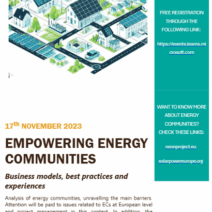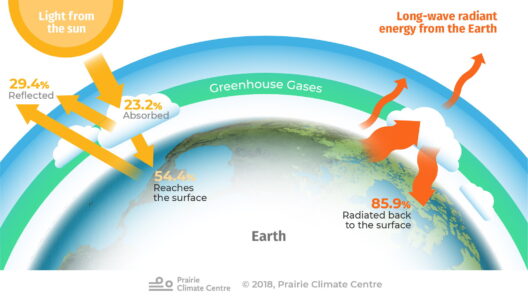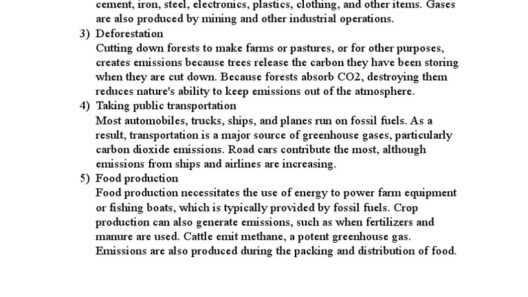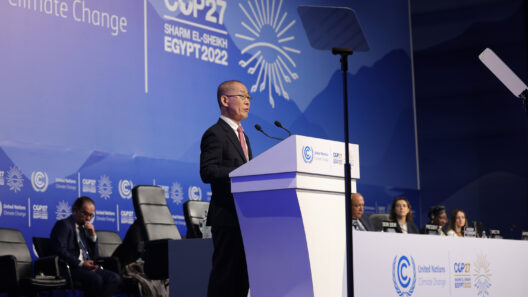Global warming is an existential threat that looms over our planet, urging every individual to engage in action. It is imperative that we reduce our carbon footprint to mitigate the dire consequences associated with climate change. Understanding small, practical steps one can take can create a substantial impact. Adopting a holistic approach not only furthers personal sustainability but also ignites a collective responsibility for the planet’s future.
In this exploration, we will delve into effective strategies individuals can adopt to curtail harmful emissions, stimulate a greener lifestyle, and propel societal change through conscious choices.
Awareness and Education: The Cornerstone of Change
Before embarking on any journey to mitigate global warming, awareness is essential.
Understanding Carbon Footprint
Your carbon footprint encapsulates the total greenhouse gases (GHGs) emitted directly or indirectly by your activities. Recognizing the complexity of various factors – from transportation habits to dietary choices – may open your eyes to the extent of your impact. In fact, the World Resources Institute estimates that individuals contribute about 7.5 tons of CO2 emissions on average annually. This statistic brings forth an enlightening realization – even minor alterations in daily habits can ripple through to generate positive environmental consequences.
The Power of Knowledge
Education is pivotal; share insights with family, friends, and community members. Organize workshops, engage in community discussions, or even utilize social media platforms to spread awareness. The more individuals grasp the urgency and the measures available, the more momentum we gain in tackling this crisis as a unified front.
Transportation Choices: Reimagining Mobility
Transportation is a primary contributor to GHG emissions, fueling global warming. Rethinking your mobility habits can significantly diminish your carbon footprint.
Embrace Alternative Transit
Consider adopting public transportation or carpooling strategies. Utilizing buses, subways, and trains reduces the number of vehicles on the road, directly cutting down CO2 emissions. Alternatively, walking or cycling for short distances not only lowers emissions but also enhances personal health. Beyond physical wellbeing, these choices enshrine a culture of environmental consideration.
Electric and Hybrid Vehicles
For those who find driving unavoidable, transitioning to electric or hybrid vehicles can be transformative. These cars produce fewer or zero tailpipe emissions and diminish reliance on fossil fuels. Furthermore, state incentives often facilitate the transition to electric vehicles, making them a more accessible option for many. Keep abreast of advancements in battery technologies, as innovations are rapidly evolving.
Home Energy Efficiency: Your Fortress of Sustainability
Your home serves not only as a shelter but also as a beacon of sustainability. Enhancing energy efficiency can lead to remarkable reductions in carbon emissions.
Insulation and Modernization
Investing in high-quality insulation and energy-efficient windows creates a thermal buffer, significantly reducing energy consumption. Properly sealing doors and windows obstructs unwanted drafts, allowing you to maintain comfortable temperatures while consuming less energy. This translates to lower utility bills, preserving your finances alongside the environment.
Harnessing Renewable Energy Sources
Transitioning to renewable energy sources – such as solar or wind – is a powerful way to diminish your household’s carbon footprint. Installing solar panels empowers homeowners by harnessing clean energy directly from the sun while yielding diverse financial benefits, including tax credits and savings on energy bills over time. Additionally, communities could consider supporting local wind farms that contribute to an overarching goal of sustainability.
Mindful Consumption: Rethinking Your Lifestyle Choices
Every choice matters, particularly when it comes to consumption. Mindfulness in daily activities fosters environmental consciousness.
Embrace Minimalism
Adopting a minimalist lifestyle curtails unnecessary consumption. Evaluate your purchases and seek to prioritize quality over quantity. Opt for products that are durable, reusable, and ethically sourced. This attunement to resourcefulness not only benefits the environment but also fosters personal satisfaction, as individuals derive fulfillment from quality experiences rather than mere material possessions.
Ecolabels and Sustainable Choices
When shopping, pay meticulous attention to ecolabels. These labels signify that products have been manufactured with sustainable principles in mind, ensuring a lower environmental impact. Support brands that prioritize eco-friendly practices, and consider local goods, as they typically involve fewer carbon emissions associated with transportation.
Reduce, Reuse, Recycle: The Holy Trinity of Sustainability
Engaging in the reduce, reuse, recycle mantra creates a robust framework for consumption. By reducing waste and embracing reusable items, you can significantly diminish the demand for new products and their associated carbon footprints. Beyond personal action, champion recycling initiatives in your community; fostering collective recycling habits engrains environmental conscientiousness in culture.
Taking a Stand: Advocate for Policy Changes
Individual actions, while essential, must be complemented by systemic changes. Engaging in advocacy amplifies our voices, inciting necessary shifts on a broader scale.
Communication with Representatives
Reach out to your local representatives to advocate for more effective environmental policies. Urge them to endorse initiatives focusing on renewable energy, emission standards, and conservation. Active engagement in civic matters reinforces the need for environmental priorities to soar to the forefront of political agendas.
Joining Local Environmental Groups
Align yourself with local environmental organizations dedicated to advocacy and education. These groups often orchestrate community clean-up efforts, tree planting campaigns, and educational workshops that cultivate further awareness. United, our efforts resonate louder, signaling a clarion call for action against global warming.
Conclusion: A Collective Journey Towards Sustainability
Stopping global warming requires relentless commitment and collective action. By adopting practical steps to reduce your carbon footprint, you become an integral part of a much larger solution. The actions of one person, multiplied by millions, can propagate a tidal wave of change – shifting society towards a sustainable destiny. Through heightened awareness, mindful consumption, and advocating for impactful policies, the journey to a cooler planet begins with you.








